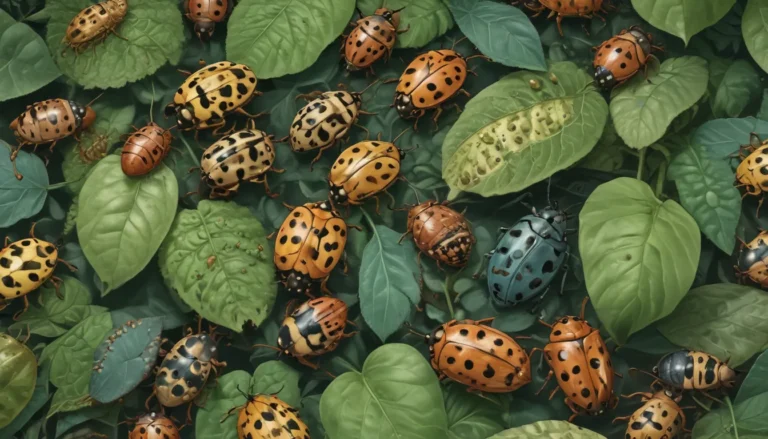Complete Guide to Growing and Caring for Hardy Fuchsia

When it comes to fuchsias, there is something magical about these plants. Their ephemeral beauty captivates our hearts, but usually, we have to say goodbye to them at the end of the season – unless we’re talking about hardy fuchsias.
While tender fuchsias are stunning, they can’t handle even a hint of frost. On the other hand, hardy fuchsias can survive in temperatures as low as -5°F, allowing us to enjoy their captivating blossoms year after year.
These hardy fuchsias have unique growing requirements and characteristics that set them apart from their tender counterparts. In this comprehensive guide, we’ll explore everything you need to know to help these showy perennial shrubs thrive.
What Are Hardy Fuchsias?
Hardy fuchsias, known as Fuchsia magellanica, are distinct from tender varieties due to their ability to withstand colder temperatures. They have woody stems and a bush-like growth habit, making them more suitable for environments with low temperatures.
When selecting a hardy fuchsia, it’s crucial to ensure it can survive in your USDA Hardiness Zone. Typically, hardy fuchsias can withstand temperatures as low as Zone 6 with some winter protection.
Cultivation and History
Most hardy fuchsias are hybrids derived from F. magellanica, originating from Argentina and Chile. Additionally, hybrids of other species like F. arborescens, F. bacillaris, and F. cylindracea are also considered hardy or half-hardy.
Propagation of hardy fuchsias is commonly done through cuttings rather than seeds, as most are hybrids. You can use either hardwood or softwood cuttings to propagate these plants with ease.
From Hardwood Cuttings
Taking hardwood cuttings in the fall is an effective way to propagate hardy fuchsias. By following simple steps like dipping the cuttings in rooting hormone and providing adequate moisture, you can successfully root these cuttings for planting in the spring.
From Softwood Cuttings
For softwood cuttings, timing is essential. Taken in the spring, these cuttings require specific care such as covering with a plastic bag to retain moisture. Transplanting should occur once new leaves have formed, ensuring proper hardening off for successful growth.
From Seedlings/Transplanting
When planting seedlings or transplanting fuchsias, establish the roots at a suitable depth to protect them from extreme temperatures. Adequate watering and winter protection are crucial for ensuring the survival of these beautiful plants.
How to Grow
Hardy fuchsias thrive in partial to full sun, contrary to popular belief. While they prefer moist soil, they can tolerate less water than tender fuchsias. Proper moisture levels should be maintained to support healthy growth and blooming.
For container-grown hardy fuchsias, extra shading and regular watering are essential, as these plants are more susceptible to drying out. Planting them in the ground allows for more stability and protection against temperature fluctuations.
Remember that hardy fuchsias need winter protection if they are at the lower end of their hardiness range. Providing mulch and occasional watering during the cold season can help them survive until spring.
Growing Tips
- Plant hardy fuchsias in full sun to partial shade.
- Ensure the soil remains consistently moist for optimal growth.
- Exercise caution when growing hardy fuchsias in containers to prevent drying out.
Pruning and Maintenance
Pruning hardy fuchsias promotes plant health, shape, and flower production. By removing dead or diseased wood and thinning out dense areas, you can encourage new growth and blossoms.
Pruning in spring before leaf buds open or in fall after foliage has fallen off helps to maintain plant vigor. Regular application of compost around the base provides essential nutrients and acts as mulch.
Maintaining a healthy root system and providing winter protection contribute to the overall resilience of hardy fuchsias against harsh environmental conditions.
Cultivars to Select
An array of fuchsia hybrids and cultivars offer various colors and growth habits for your garden. From compact varieties like ‘Alice Hoffman’ to elaborate blooms of ‘Charming,’ there are options suited for different climates and preferences.
Dwarf-sized Encliandra fuchsias and multicolored cultivars like ‘Versicolor’ provide diversity and charm to your garden. Selecting cultivars based on hardiness and aesthetics can enhance your fuchsia collection.
Managing Pests and Disease
While hardy fuchsias are relatively resistant to pests and diseases, they are not immune to common issues like aphids, whiteflies, and rust. Regular monitoring and proper care practices can prevent infestations and infections.
Pruning, using insecticidal soap, and applying fungicides are effective measures to control pests and diseases. Maintaining good air circulation and watering practices help prevent common fungal infections.
For detailed guidelines on managing pests and diseases, refer to comprehensive resources to protect your hardy fuchsias from potential threats.
Best Uses
Hardy fuchsias are versatile plants suitable for various applications in the garden. Whether grown in containers, as specimens, or trained as topiaries, they add ornamental value to outdoor spaces.
The edible berries and flowers of hardy fuchsias offer a unique culinary experience for enthusiasts. From hanging containers to groundcovers, these plants provide aesthetic and functional benefits in diverse garden settings.
Quick Reference Growing Guide
- Plant Type: Herbaceous perennial flower
- Flower/Foliage Color: Orange, pink, purple, red, white/green, cream, yellow
- Native to: Central America, New Zealand, South America
- Maintenance: Moderate
- Hardiness (USDA Zone): 6-10
- Tolerance: Shade, moisture
- Bloom Time: Spring-fall
- Soil Type: Loamy
- Exposure: Full shade-full sun
- Soil pH: 6.0-7.0
- Time to Maturity: Up to 7 years
- Soil Drainage: Well-draining
- Spacing: 24 inches, depending on variety
Conclusion: Embrace the Beauty of Hardy Fuchsias
In conclusion, hardy fuchsias are resilient plants that bring lasting beauty and charm to gardens of all sizes. By understanding their unique characteristics and following proper care practices, you can cultivate thriving fuchsia specimens in your outdoor spaces.
Whether you’re a seasoned gardener or a novice plant enthusiast, exploring the world of hardy fuchsias opens up a realm of possibilities for creating stunning landscapes and enhancing your gardening experience.
So, embrace the allure of hardy fuchsias and witness the transformation of your outdoor spaces with these captivating and enduring plants.
We hope you enjoyed this comprehensive guide on growing and caring for hardy fuchsia plants. If you have any questions or insights to share, feel free to leave a comment below! Also, explore our additional resources on fuchsia varieties, winter preparation, and pest management for a holistic approach to fuchsia cultivation.





